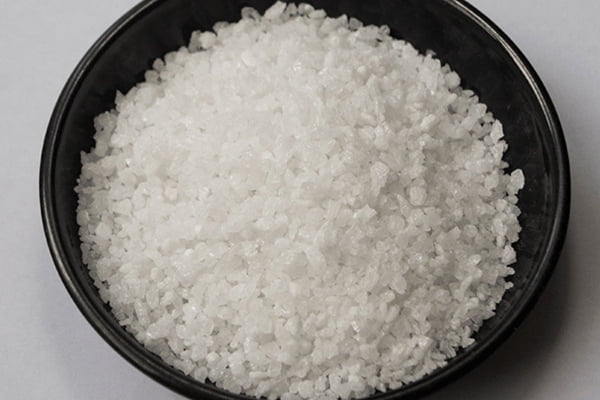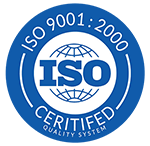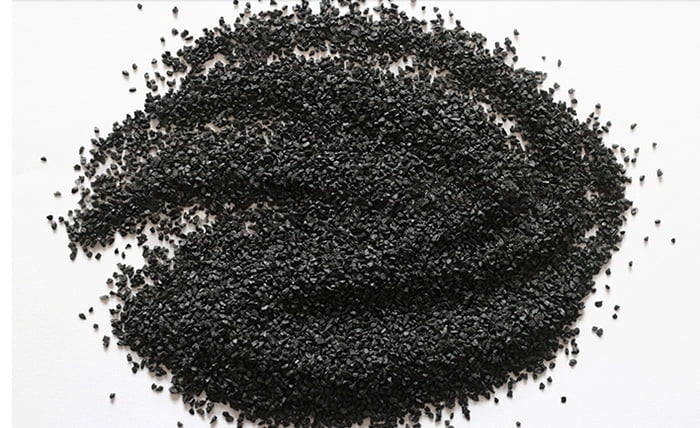White Fused Alumina
White Fused Alumina (WFA) is a high purity synthetic mineral made from aluminum oxide. It is produced by melting a mixture of calcined alumina and a small amount of chromium oxide in an electric arc furnace at high temperatures. WFA has a very high degree of purity, with low levels of iron, sodium, and other impurities.
WFA is widely used in abrasive applications due to its hardness and toughness. It is commonly used in grinding wheels, sandpaper, and other abrasive products. WFA is also used in refractory materials, ceramics, and as a raw material for the production of aluminum metal.
WFA is available in different grit sizes and can be used for a variety of applications depending on the desired surface finish and material removal rate. It is often preferred over brown fused alumina (BFA) due to its higher purity and toughness.
Request Custom Quote
Particle Size

- Common particle size of refractory materials: 0-1, 1-3, 3-5, 5-8mm, 100, 200, 325#
- Common particle size of abrasives: 12, 14, 16, 24, 30, 36, 46, 60, 80, 100, 120, 150, 180, 200, 220, 240, 280, 325#.
- Common micropowder for polishing and grinding: 400, 600, 800, 1000, 1500, 2000-6000#
- The granularity of the product can be processed according to the granularity required by the user.
Features
- Hardness: One of the key properties of White Fused Alumina is its high hardness, which ranks at 9 on the Mohs scale. This makes it an excellent abrasive material, capable of efficiently cutting and grinding various surfaces.
- High Refractoriness: White Fused Alumina has a high refractoriness, meaning it can withstand high temperatures without melting or breaking down. This property makes it suitable for use in refractory materials and high-temperature applications.
- Chemical Stability: The chemical stability of White Fused Alumina is another important property. It is resistant to most chemical reactions and does not react with acids or alkalis, making it a versatile material for various applications.
- Thermal Conductivity: White Fused Alumina has a low thermal conductivity, which means it does not conduct heat very effectively. This property makes it an excellent insulator, particularly in high-temperature environments.
Applications
Abrasives
Refractory Materials
Due to its high refractoriness and low thermal conductivity, White Fused Alumina is an essential component in the production of refractory materials. These materials are used to line furnaces, kilns, and other high-temperature equipment to provide insulation and protection against heat.
Surface Treatments
White Fused Alumina is also used in surface treatment processes, such as sandblasting and shot peening. It effectively removes surface contaminants and roughens the surface to improve adhesion for coatings or paint.
Precision Casting
In the precision casting industry, White Fused Alumina is used as a mold material due to its high refractoriness and excellent chemical stability. It can withstand the high temperatures associated with the casting process and produce high-quality castings with minimal defects.
Parameters
Physical Properties
| Hardness | 9 mohs |
| Grain shape | angular |
| Melting point | 2050℃ |
| Specific gravity | 3.9-4.1 g/cm³ |
| Bulk Density (depending on granular size) | 1.4-2.1 g/cm³ |
Chemical Contents
| ltem | Assurance Value | Typical Value |
| Al2O3 | 99.3% min | 99.7% |
| Fe203 | 0.1% max | 0.05% |
| Na20 | 0.4% max | 0.16% |
| SiO2 | 0.15% max | 0.02% |
FAQ
Contact Us
Get Free Quotation
Founded in 2001, HSA is a leading provider of Silica Fume and Abrasives in China, and also the premium source of high-performance Products for concrete and abrasives industries.






